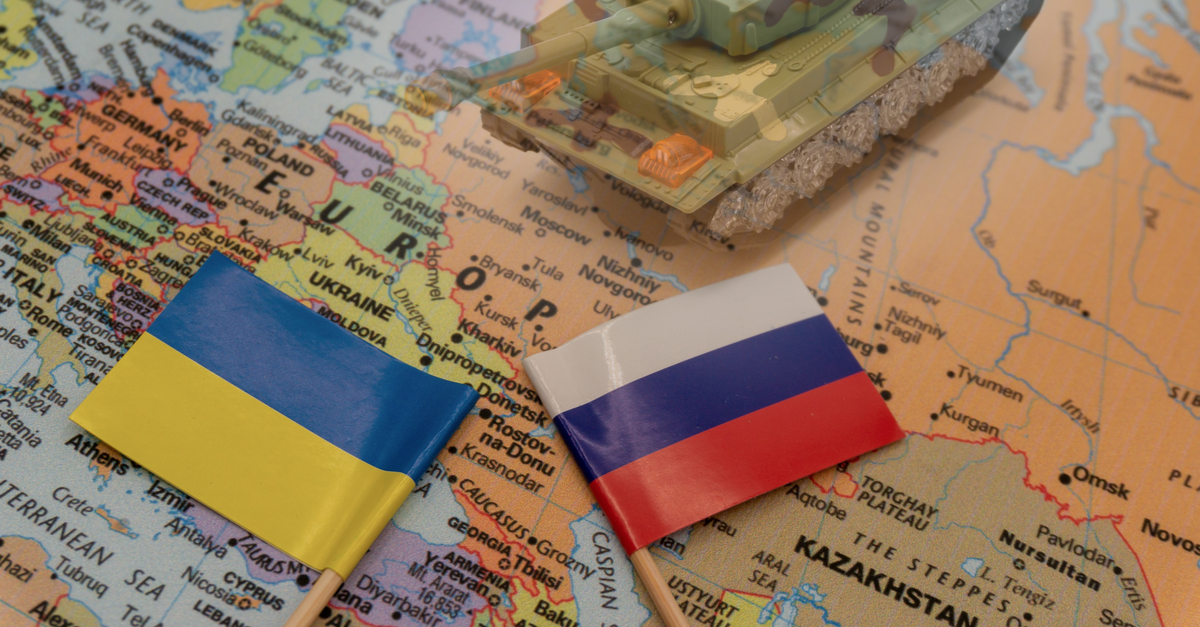
Posts Global Market war 6519 03 April 2022
Many major countries’ producers, and entire industries may benefit from the consequences of the Russian war against Ukraine
There are always winners, and losers, in any military flare up. In the intraregional war of Russia against Ukraine the economic consequences are already felt by the whole world. At the same time individual countries, and companies will be able to improve their financial data, and market positions. Who benefits from the war, sanctions against Russia, rising prices, supply crisis, redistribution of markets – investigated GMK Center.
Steel & Ore
Ukraine, and Russia are the key suppliers of pig iron, and semi-finished products at the global market – around 60% of market share. The main importers are USA, EU, and Turkey.
Seller’s market in fact disappeared – supplies from Russia, and Ukraine formed almost 60% of the global pig iron market. As a result, pig iron prices rose to around $1,000/t.
The price rise is beneficial for metallurgical companies. The main beneficiaries are China, which started to supply slabs to Europe after a long break, Turkey, Brazil, and India, replacing supplies from Russia, and Ukraine. Also, part of the pig iron demand may go to the material segment.
Turkey, and India benefit from the fact that Europe shifts Russian quotas for supply of rolled steel. There is a strong rise of demand for all Turkish metal products, which pushed scrap prices above $650/t.
Earlier the European Commission announced plans to ban import of hot-rolled, and cold-rolled steel, pipes, rebar, and other finished products from Russia, excluding iron ore, and semi-finished products. It is estimated that the supply ban will affect Russian metallurgical products with a total value of €3.3 billion.
Ukraine supplied the EU’s need for iron ore by about the third. Now deliveries have decreased, but Ukrainian Mining & Processing Plants continue to work, and ship products to the EU. A drop in iron ore supplies from Ukraine, and Russia will be covered by imports from Australia, and Brazil.
No-ferrous metals are extremely important in the green transition, in particular, in production of electrical vehicles. the EU, nor the US is going to impose sanctions against Russian non-ferrous metals Neither producers in order to avoid an increase of its shortage at the market. Russia for its part may impose a ban on the sale of non-ferrous metals to “unfriendly” countries.
Copper
According to ICSG, in 2021, the global production of refined copper amounted to 24.5 million tons, and real consumption was 25.3 million tons. The deficit was 475 thousand tons, almost the same as in 2020. The volume of Russian copper production in 2021 amounted to 875 thousand tons, which accounted for 4% of global production. The reduction of Russian export of this metal could cause tensions in the growing, and tight market.
The main part of the copper export from Russia goes to China, where Russia’s share is growing. China, Chile, Indonesia could benefit from potential problems with copper supply from the Russian Federation. Indonesia is going to end copper ore export in 2023 in an effort to increase investment in the downstream sector, and export of higher-value-added products.
Demand for copper electric vehicles will grow multiple times in coming years, and new copper production capacity will be set to work over the next 5-7 years to avoid the increase of shortage.
Aluminium
In 2021, the global demand for primary aluminum rose by 8.8%, to 69 million tons, while supplies increased by 3.9%, to 67.8 million tons. So there was a shortage at the global market of 1.2 million tons compared to the surplus of 1.9 million tons in 2020.
Now aluminum is trading at high prices due to rising electricity prices. In 2021 European aluminum smelters began to operate at a loss due to higher energy prices, and reduced output by around 15% of production capacity utilization level, or by 5 million tons.
In 2021, Russia produced around 3.76 million tons of aluminum which accounted for almost 6% of global production. The EU satisfies 17% of its needs in metal with supplies from Russia. The US sanctions against a shareholder of the Russian producer Rusal but not against the company immediately sent aluminum prices up by 30% as buyers began to look for additional suppliers.
Despite Rusal being sanctioned to a limited extent, the company has already lost supplies of raw materials from Australia, and Ukraine. Last year, the Nikolaev Alumina Plant produced 20% of Rusal’s total demand for alumina. According to Wood Makenzie, the only way for Rusal to obtain alumina is to buy it from China, and reorient sales to the East. Thus, the beneficiary of Rusal’s problems may be China, which is going to increase its stake in the company.
Demand for the alumina in the world will grow, and the increase in production depends on the energy prices, which increases pressure on the prices.
Nickel
Russia accounts for about 7% of global nickel production, and 10-12% of the metal export.
Currently there is a surplus in a global nickel market. However Fitch Ratings raised its nickel spot price forecast on the LME for 2022 to $20,000/t from $16,000/t due to increased supply risk.
The main global nickel supplier is Indonesia. This country is actively increasing metal production, which means that in case of cessation of supplies from the Norilsk Nickel, local companies could replace Russian supplies.
Six out of ten attractive projects are located in North America, so the competition in the market could increase.
Oil, gas
Western sanctions against Russia, and the refusal of many companies (British Petroleum, Shell, ExxonMobil, etc), and countries to supply Russian energy sources unbalanced the global energy trade, which led to higher prices. According to Fitch, Russia supplies about 10% of the global energy resources, including 17% of natural gas, and 12% of the oil.
Recently Russia made stringent demands regarding payment for energy supplies to “unfriendly countries” in rubles, threatening earlier to cut off gas supplies via the Nord Stream 1 gas pipeline. In any case, it will be difficult for Russia to adhere to the course – oil, and gas revenues account for up to 40% of the state budget of the Russian Federation, and are the main source of maintaining the viability of the local economy.
Everything looks so that the absence of the Russian energy resources at the global market for a long time can lead to the global recession. It will especially affect Europe, which depends on 40% of gas from the Russian Federation, and on 27% on oil. In Europe, there may be a shortage, rationing of energy consumption if there is a sharp cessation of supplies from Russia. Therefore, Europe wants to continue cooperation with the Russian Federation in the energy supply sector for at least another 3-5 years.
The problem for consumers lies in the difficulty to diversify energy supplies rapidly, a significant part of which is tied to long-term contracts, as well as the long lead times for creating new production capacities.
In addition to Russia, Norway, and Algeria supply large volumes of gas to Europe, but they don’t have significant additional volumes to save Europe from a shortage in case of a Russian supply cut. The similar situation with a major supplier of liquefied natural gas (LNG) – Qatar. The largest LNG exporters, Australia, and the USA, can partially help Europe. The USA has already agreed with the European Union on the supply of an additional 15 billion QM of LNG in 2022.
As for oil, the situation looks somewhat clearer. Although there are no signals about the desire to increase production from the UAE, and Saudi Arabia, as they “enjoy” the price rise, it is they who most likely will become the beneficiaries of Russian supply replacement.
Grain, agricultural products
According to the Food, and Agriculture Organization, between 2016/2017, and 2020/2021, Russia, and Ukraine accounted for 19% of global barley production, 14% of wheat, and 4% of corn. At the same time, both countries account for more than half of the production of sunflower oil, and its share of export is 63%.
The UN is already predicting famine in countries dependent on agricultural supplies from Ukraine, and Russian as well as the collapse of the world’s food system. According to the estimates of the Ministry of Agrarian Policy of Ukraine, the country provides food for more than 400 million people worldwide with =out taking into account its own population.
Ukraine, and the Russian Federation are the leading exporters of agricultural products to many countries in the Middle East, and North Africa. Logistrical disruptions due to Russian aggression have already driven up the price of bread, and other basic products in the region. Prices for wheat, sunflower oil, and other types of agricultural products in March demonstrated the highest level in the history of monitoring due to the supply shortage.
The FAO estimates, a global supply shortage could lead to global food, and feed price rise by 8-22% from their high current levels.
Already, the situation is significantly aggravated by the ban of the Russian Federation on the grain export – wheat, rye, corn, barley, to the countries of the Eurasian Economic Union (EAEU).
Other major exporters – EU, Canada, the USA, Brazil, Argentina, Australia – can benefit from the grain supply reduction. However, in reality the situation is much more complicated than it might seem. First, fertilization factories in Europe have reduced, or stopped production due to high energy prices, and farmers around the world are reducing their application to the soil, which threatens the size of crops. Secondly, grain stocks are already limited in the US, and Canada, and Argentina in December last year imposed restrictions on the export of corn, and wheat.
According to APK-Inform analysts, key wheat exporters to the world market can increase suppliers by 1.5-3 million tons, which is not enough to compensate for the export shortage from the Black Sea region.
Many countries around the world are looking for alternative sources of supply at new prices, and will be forced to reduce or change consumption patterns, or will be forced to accept rising prices.
Armaments, ammunition
War is the best time for corporations that produce any kind of weapons, and equipment. Since the beginning of the military aggression of the Russian Federation against Ukraine, the shares of American suppliers of weapons, and ammunition, such as Raytheon, Boeing, Lockheed Mertin, and others, have skyrocketed. This is due to rising defense costs in many countries.
THe US defense budget for 2022 us $778 billion. The largest military budget in history, $813 billion, is planned for 2023. US military-industrial corporations receive half of all funds provided to defense.
Similar sentiments in Europe. In particular, Germany has one-time increased funding for its army by €100 billion, which will be used to modernize existing, and purchase new military equipment.
The rising costs are associated not only with the growing threat from Russia, but also with the current lack of preparedness of the armed forces of key EU countries for a long-term confrontation with the Russian Federation. According to official statements, up to half of individual types of German military equipment are now in a technically unserviceable condition, and ammunition in French warehouses will last only a few days of intense fighting. The situation is similar in other European countries.
A serious factor is also that the countries will buy new weapons, and equipment to replace the supply of existing ones to Ukraine.
Sanction Circumvent
There are many opportunities to circumvent sanctions, and many countries want to take advantage of this. Russia is already openly saying that it will look for ways to circumvent Western sanctions together with Iran.
At the same time, the United States imposed secondary sanctions in late March for helping Russia to circumvent imposed sanctions. These threats are addressed primarily to China. The largest state-owned banks in China, ICBC, and Bank of China have already limited transactions for the purchase of Russian raw materials.
Help to circumvent sanctions would bring huge benefits to a number of countries, and regions, and rising costs for Russian companies in face of closed markets will not confuse anyone. The main beneficiaries of the sanction circumvention will be countries that have not imposed sanctions against Russia, and have significant foreign trade turnover with it – China, India, Turkey, the states of Central Asia, and the Caucasus, the Middle East.





